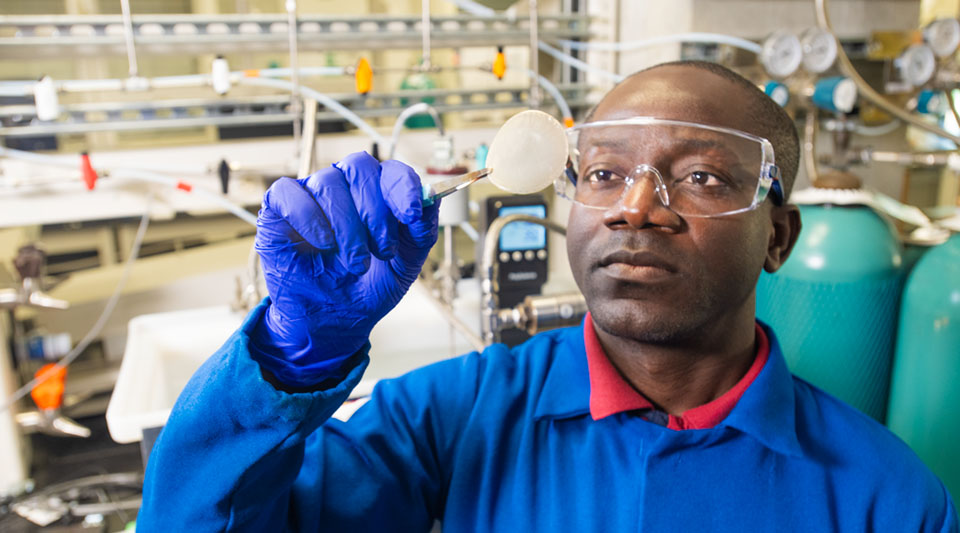Chemical separation, including gas separation, accounts for a whopping 15 percent of U.S. energy consumption and produces millions of tons of carbon emissions.
Separating gases by passing them through membranes could be an efficient, environmentally-friendly alternative to current methods—if only the right materials could be found to make them.
Applying a graph-based, machine learning approach, a team of chemical and mechanical engineers and computer scientists at the University of Notre Dame have discovered, synthesized and tested polymer membranes that can separate gases up to 6.7 times more effectively than previously synthesized membranes. Their results have been published in Cell Reports Physical Science.
“What determines the membrane’s performance is the material’s microscopic porosity,” said Agboola Suleiman, doctoral student in the lab of Ruilan Guo, professor of chemical and biomolecular engineering.
“The ideal membrane material strikes a balance between selectivity and permeability—permeable enough to let gases in, but selective enough to keep some out,” said Suleiman, who is co-author on the paper.

To identify this Goldilocks material, the team used Graph Neural Networks (GNN), a type of machine learning particularly well-suited to representing a material’s molecular structure as well as its relationship with other molecules. After being trained on datasets, GNN identified two polymers that had the right properties to out-perform previously synthesized membranes.
“Our machine learning algorithms led us to materials that had previously only been used for electronics applications,” said Tengfei Luo, professor of aerospace and mechanical engineering and co-author on the paper. “Then we synthesized and tested these materials in the lab, verifying their high performance in separating gases. It was like finding hidden gems.”

Synthesizing polymers can be costly and time-consuming, so the data available about their molecular structure and chemical properties is scarce and incomplete.
However, algorithmic innovations devised by co-authors and computer scientists, Meng Jiang and his doctoral student Gang Liu, solved this problem.
“By using machine learning techniques, we were able to augment and improve our data,” said Jiaxin Xu, doctoral student in Luo’s lab and co-author on the paper. “The graph-based model, enriched with information about each material’s molecular properties, allowed us not only to predict the best membrane materials but also to explain why they’re the best.”
The team’s top-performing polymers may be used to create membranes capable of separating several gas pairs, which are critical for industrial applications.
— Karla Cruise, Notre Dame Engineering; Photo of Agboola Suleiman by Wes Evard, Notre Dame Engineering
